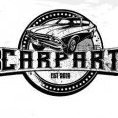-
Welcome to Auto Parts Forum
Whether you are a veteran automotive parts guru or just someone looking for some quick auto parts advice, register today and start a new topic in our forum. Registration is free and you can even sign up with social network platforms such as Facebook, X, and LinkedIn.
Holden Special Vehicles VF HSV LSA CONVERSION KIT COMPLETE
-
Similar Topics
-
By shelitaauto
Source: Gasgoo
URL:
link hidden, please login to view Electric car maker Fisker said on June 12 it would recall more than 18,000 vehicles in North America and Europe due to software glitches and non-compliance with safety standards, the latest setback for the cash-strapped electric car start-up.
Fisker is voluntarily recalling 11,201 Ocean vehicles sold in the United States, Canada and Europe to fix a software issue that could cause the vehicles to enter safe state protected mode, potentially causing the motors to lose power.
In addition, Fisker is recalling 6,864 Ocean vehicles in the United States because the dashboard and display prompt ICONS do not comply with the Federal Motor Vehicle Safety Standard (FMVSS). The company will also recall an additional 281 vehicles in Canada as a result.
Image source: Fisker
The startup plans to address these issues with an OTA update to Ocean OS in-car software by June 30. The company said vehicles that have been updated to the latest version of the software are not affected by the recall.
The National Highway Traffic Safety Administration (NHTSA) is investigating four safety incidents involving the Ocean SUV, the only Fisker model currently in production. NHTSA said last month that it was investigating complaints that the Ocean Automatic Emergency Braking System was accidentally activated.
Cash-strapped Fisker is looking for alternatives after talks with a major automaker over a potential investment collapsed. The company’s Austrian subsidiary filed for bankruptcy protection in May.
-
By Counterman
link hidden, please login to view announced the launch of 59 new complete strut assemblies for the North American market. The launch includes application coverage for Nissan Frontier, Toyota Highlander and Mercedes E-Class models, in addition to brand-new applications, such as the Dodge Durango 2022, the Ram ProMaster City 2022, and the Mazda CX-9 2022, among others, according to PRT.
“As an OE supplier, our company is always committed to premium quality, top performance and innovation, so we are continually launching new applications for the Aftermarket. These new items are in stock and ready to ship!” said Bruno Bello, director of global marketing.
For more information, call 1-770-238-1611, visit
link hidden, please login to view or follow @prtautoparts. The post
link hidden, please login to view appeared first on link hidden, please login to view.
link hidden, please login to view -
By Counterman
link hidden, please login to view, an ADD Group brand, announced the launch of 30 new complete strut assemblies for light vehicles, SUVs and pickups, which it said represent more than 10 million vehicles in new coverage. The launches covers a range of vehicle applications, including the Hyundai Tucson, Kia Sorento and Acura RDX, in addition to brand-new applications, such as the GMC Acadia 2021, Chevrolet Blazer 2021, and Subaru Outback 2021, among others.
“These new items come to expand our coverage for the US aftermarket. As an OE supplier, we continually invest in research and development, delivering innovative solutions from OE to our clients in the aftermarket. The new products are in stock and ready to ship,” said Bruno Bello, director of global marketing.
For more information, call 1-770-238-1611, visit
link hidden, please login to view, or follow @prtautoparts. The post
link hidden, please login to view appeared first on link hidden, please login to view.
link hidden, please login to view




Recommended Posts
Join the conversation
You can post now and register later. If you have an account, sign in now to post with your account.
Note: Your post will require moderator approval before it will be visible.